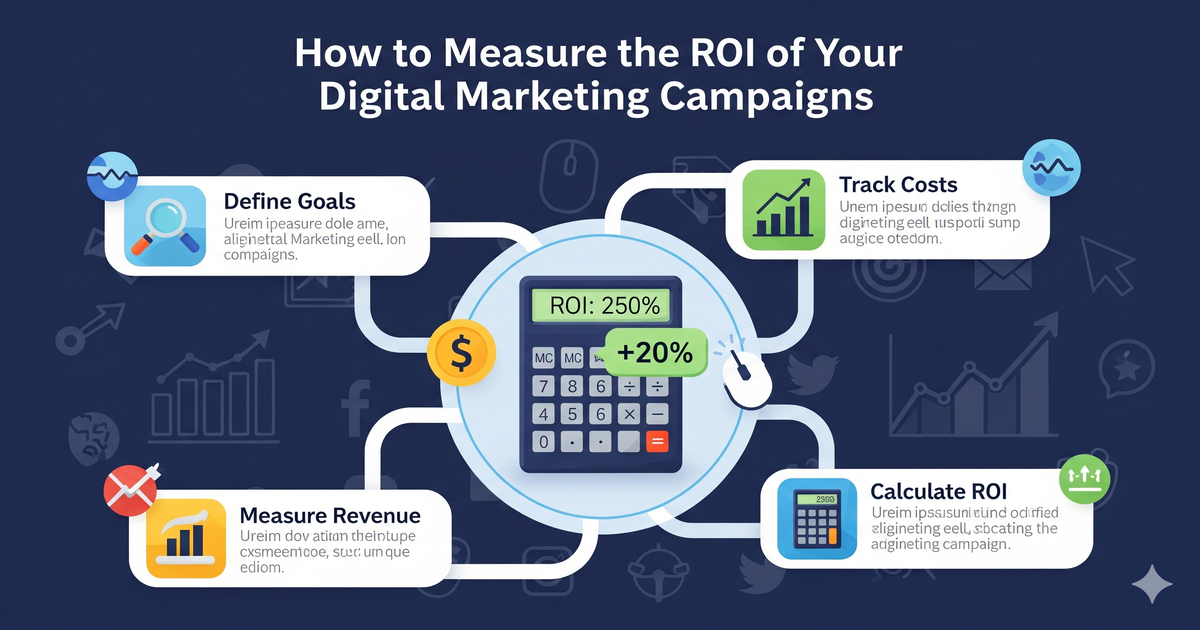
Digital marketing is a powerful way to reach and engage your target audience, but how do you know if your efforts are paying off? Measuring the return on investment (ROI) of your digital marketing campaigns can help you evaluate the effectiveness of your strategies and optimize your budget. In this article, we will explain what digital marketing ROI is, why it is important, and how to calculate and improve it for different types of campaigns.
What is digital marketing ROI?
Digital marketing ROI is the ratio of the profit or revenue generated by your digital marketing activities to the cost of those activities. It shows you how much money you are making or losing from your online marketing efforts. A positive ROI means that you are earning more than you are spending, while a negative ROI means that you are losing money.
Why is digital marketing ROI important?
Digital marketing ROI is important for several reasons:
- It helps you justify your marketing budget and demonstrate the value of your work to your stakeholders.
- It helps you compare the performance of different campaigns and channels and identify the most profitable ones.
- It helps you find areas for improvement and make data-driven decisions to optimize your campaigns.
How to calculate digital marketing ROI?
The basic formula for calculating digital marketing ROI is:
ROI = (Revenue – Cost) / Cost x 100%
This formula gives you the percentage of profit or loss from your digital marketing activities. For example, if you spend $1000 on a Facebook ad campaign and generate $3000 in revenue, your ROI would be:
ROI = ($3000 – $1000) / $1000 x 100% = 200%
This means that for every dollar you spend on Facebook ads, you earn two dollars in return.
However, this formula may not be enough to capture the full picture of your digital marketing ROI. Depending on your goals and metrics, you may need to adjust the formula or use different variables. For instance, you may want to use net profit instead of revenue, which takes into account the expenses associated with producing and delivering your products or services. You may also want to use customer lifetime value (CLV) instead of revenue, which estimates the total amount of money a customer will spend with your business over time.
Additionally, you may need to use different methods to track and attribute the revenue or profit generated by your digital marketing campaigns. For example, if you are running an email marketing campaign, you may use a tracking code or a unique landing page to measure how many conversions or sales come from your emails. If you are running a content marketing campaign, you may use Google Analytics or other tools to measure how much traffic, leads, or sales come from your blog posts or ebooks.
How to improve digital marketing ROI?
There are many ways to improve your digital marketing ROI, but here are some general tips:
- Set clear and realistic goals and KPIs for your campaigns and measure them regularly.
- Use analytics tools and platforms to track and analyze your campaign performance and ROI.
- Test different elements of your campaigns, such as headlines, images, copy, offers, etc., and see what works best for your audience.
- Segment your audience and personalize your messages and offers based on their interests, behaviors, preferences, etc.
- Optimize your landing pages and website for conversions and user experience.
- Focus on quality over quantity and create valuable and relevant content for your audience.
- Leverage social proof and testimonials to build trust and credibility with your prospects and customers.
- Nurture your leads and customers with email marketing and remarketing campaigns.
- Experiment with different channels and platforms and find the ones that deliver the best results for your business.
Conclusion
Digital marketing ROI is a crucial metric that can help you measure the success of your online marketing efforts. By calculating and improving your digital marketing ROI, you can optimize your budget, increase your profits, and grow your business. However, keep in mind that digital marketing ROI is not a one-size-fits-all concept. You need to define what it means for your specific goals and context and use the appropriate methods and tools to measure it.






No comment yet, add your voice below!